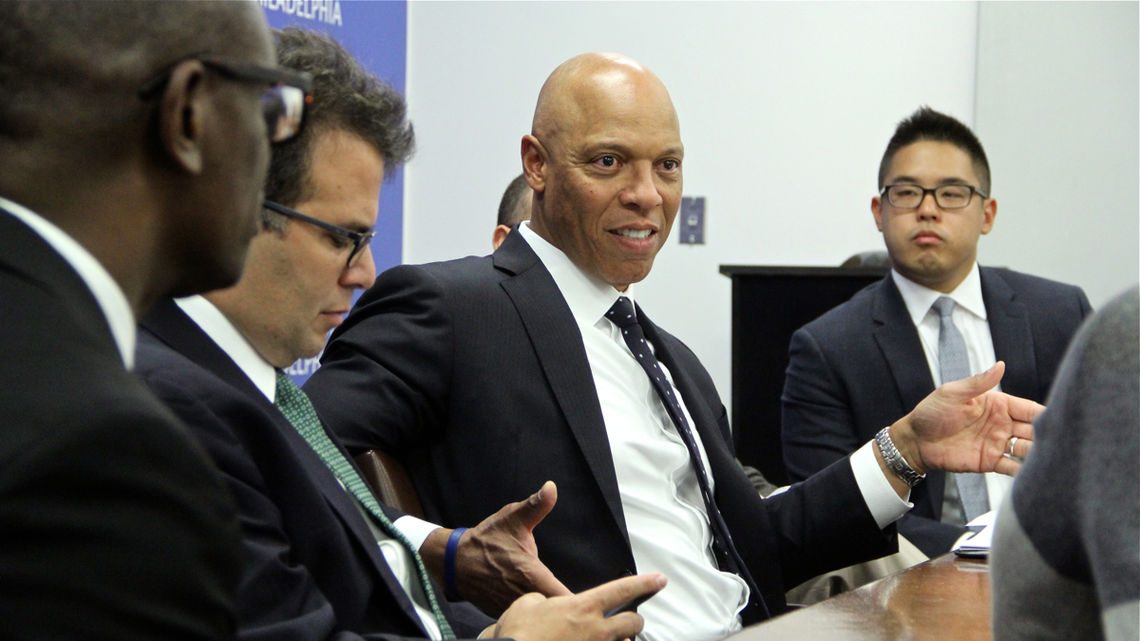Money for District overhaul should go to making buildings safer, healthier
Philadelphia schools Superintendent William Hite has a plan to spend up to $20 million over several years on privatization, school closures, new schools, and other turnaround efforts aimed at getting 5,000 students “in better schools close to where they live.” My 30 years of experience in performing onsite evaluations of deficient school-building conditions leads me to propose something very different. Let’s spend that $20 million fixing the schools that our kids attend now.
With $20 million, we can protect all school children and staff, while promoting achievement for many more than the 5,000 children in the limited number of schools that Hite hopes to impact. And we can do so without ignoring the universal positive impact of improving indoor air-quality conditions.
Too many of our schools are literally falling apart around our kids. Shockingly poor conditions contribute to student and staff illness, absenteeism, damaged books, supplies, and materials and undercut academic achievement. Healthy buildings – free of mold, flaking lead-containing paint and plaster dust, water intrusion and damage, leaky roofs, and rodent droppings – are a basic right and one being deferred at great cost to our school system.
Since 2010, I’ve evaluated nearly 150 schools, helping to document more than 5,000 environmental problems in them.
I regularly see kids spending more than 1,300 hours a year in building conditions like these:
These photos illustrate conditions that are all too common in our schools and in all too many cases continue unchecked for months or years at a time. They are also largely hidden from any public view.
I’ve witnessed firsthand how leaky roofs and mold destroyed tens of thousands of dollars worth of music and sports equipment, textbooks, and furniture. Classrooms have been rendered unusable. But the damage to students’ well-being is far more disturbing.
Indoor air-quality problems exacerbate asthma and other respiratory diseases, placing the most vulnerable children – those from economically disadvantaged and minority communities – at greatest risk. Instead of serving as a refuge, our schools endanger these children.
The challenge of repairing our school buildings can appear overwhelming, but we cannot ignore the problems. Inflated estimates of $4 billion to permanently upgrade all our buildings are routinely provided, but we shouldn’t let this number paralyze us from taking action now. We must immediately act to protect our students and staff and to improve academic opportunity and performance.
We should first concentrate our efforts on the repair of building interiors, where our kids and staff spend every day. Then we should address exterior problems, which are generally more costly, as money becomes available.
This strategy works. For example, at Bryant Elementary in West Philadelphia, I documented flaking, lead-containing paint, and damaged walls and ceilings in October 2013. Dust, mold, and moisture are asthma triggers, particularly for the school’s vulnerable, at-risk population, so I recommended immediate low-cost actions to address the situation.
The School District’s maintenance department was able to stabilize plaster throughout the school, paint walls and ceilings, replace damaged and moldy ceiling tiles, and perform spot repairs of leaky roofs, exterior masonry, and more. This work cost less than $50,000, resulting in real improvements in the school’s condition. Additional work has since been conducted.
Just imagine if $100,000 were allocated to repair unsafe building conditions inside every one of our most dilapidated schools; this total of $20 million would make a sea change of difference everywhere. Almost immediately those schools would become safe and healthy places for our children and teachers. Investing $25 million to $30 million would be transformative.
District leaders have not made facility improvement a priority or engaged the public in addressing this issue. They should do so now. Existing building conditions and indoor air-quality information should be readily available to all, but it is not.
I propose the District create a comprehensive triage list of interior and exterior building conditions for every school. Up to $100,000 would be allocated to schools to fix the most critical problems. The priority would be on major improvements in interior conditions to protect school occupants as well as the investment in educational materials and supplies, and to prevent ongoing damage.
More than 50 years ago, Winston Churchill noted, “We shape our buildings and thereafter, our buildings shape us.” We must improve the condition of our buildings now, in order to provide the
learning environments that our students need to do their best work. Spending an additional $20 million a year to fix our schools – now that would be money well-spent.
From: Money for District overhaul should go to making buildings safer, healthier
By: Jerry Roseman
